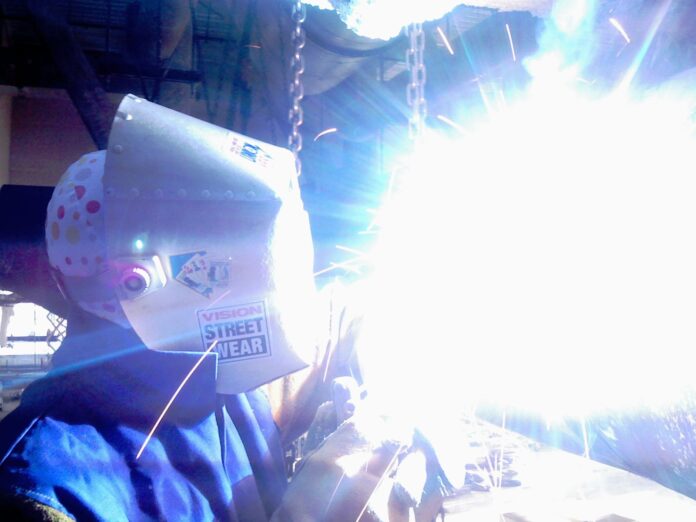In HVAC systems, germicidal or UV lights destroy bacteria, mold spores, germs, viruses, and fungi as they traverse the system. You can kill almost 100 percent of these harmful pollutants by strategically placing a UV light. UV HVAC systems installed in your air handler can provide a cost-effective solution to cleaning the air as it passes through the system.
Do UV lights work in HVAC systems?
Ultraviolet (UV) lights are becoming increasingly popular as a means of purifying air in HVAC (Heating, Ventilation, and Air Conditioning) systems. The technology behind UV lights is simple yet effective, utilizing UV-C light to kill bacteria, viruses, and other harmful microorganisms that can circulate in a building’s air.
In HVAC systems, UV lights are typically installed in the air ducts or near the evaporator coil. When air passes over the UV light, the UV-C light penetrates the cells of the microorganisms, damaging their DNA and rendering them unable to reproduce or cause harm.
Studies have shown that UV lights are effective in reducing the levels of bacteria, viruses, and mold in HVAC systems. They have also been proven to improve indoor air quality and reduce the risk of respiratory infections. In addition, UV lights can help to extend the lifespan of HVAC equipment by reducing the buildup of biological contaminants on the system’s components.
How do they work?
Heating and air conditioning systems use UV lights of a particular wavelength of 254 nanometers absorbed by microorganisms’ DNA. When organisms are exposed to UV light, they cannot produce the proteins they need to survive. Although UV light does not kill germs right away, it significantly shortens their lives and makes them less likely to harm others.
UV lights for HVAC systems: What are the benefits?
Your home contains a lot of air. Since UV lights can also be harmful to humans, it is nearly impossible to treat them as a whole. What happens inside an air handler is a different matter entirely. Your HVAC system draws air into its evaporator unit and forces it out through air registers located around your home. The UV light must pass over the UV light as the air is circulated inside your evaporator unit, making its installation a no-brainer.
What are their limitations?
Your HVAC’s UV lights will not relieve your symptoms caused by allergens since dust, and dead fungi will still be present. You can also limit UV light’s effectiveness if your HVAC system has damaged or leaky ducts because the vacuum created in the ducts can pull contaminants from your attic and crawl space. It can only be effective if microorganisms are in contact with its spectrum. If shielded from its range of light, any of the contaminants mentioned above will survive.
What is the installation process for UV lights in HVAC systems?
A professional air conditioning technician should handle the installation of UV lighting inside your evaporating unit. Wire the light to the evaporating unit of the HVAC system so that it only activates when the system is running. Before installing the equipment, a technician should inspect the ductwork for leaks and thoroughly clean the air handler system. The UV lighting system will function optimally under these conditions.
Today’s construction of energy-efficient homes emphasizes sealing every crack and crevice, so that conditioned air does not escape. This, unfortunately, has created an ideal environment for these microorganisms to grow. UV lights can be installed for HVAC systems to control or even eliminate these harmful contaminants.
Reliable Heating & Air is available to provide additional information regarding UV lights for HVAC systems to residents of Woodstock and beyond. They have been providing excellent customer service and support for over 35 years. Highly trained technicians at Reliable can handle all of your heating and air conditioning needs.
Advantages of UV lights for HVAC
- Does UV light improve air quality? As long as the device is installed correctly, UV light with the proper wavelength will kill many types of microorganisms.
- Mold and mildew can be removed with ultraviolet lamps. For example, HVAC units have some lights placed deep inside (between the filter racks and the cooling coils). These coils generally get saturated with condensation. Areas with moisture are perfect for the growth and development of mold and mildew. However, UV lights help keep such ‘vulnerable’ places clean by preventing them from growing.
- UV lights also eliminate odors. Odor-causing chemicals are volatile organic compounds. As well as smelling bad, tobacco, paints, and cleaning agents also contribute to various health problems, ranging from headaches to irritation of the throat. UV lights work by removing VOCs from the ventilation system and the air you breathe.
- The lights improve your HVAC system’s efficiency. As a result, coils and the air that travels through the system will be cleaned organically. Thus, the unit’s capacity will be restored to up to 35%. A cleaner HVAC system will also result in lower energy bills.
Disadvantages of UV lights for HVAC
- If you or someone in your family suffers from allergies, a UV light will not alleviate the symptoms as it cannot eliminate dust or dead fungi.
- For germicidal purposes, only specific wavelengths will be effective. However, not all manufacturers are trustworthy. If the UV light is below 200 nm, it may produce ozone. The HVAC UV light may smell metallic or electric sparky, producing ozone.
- It is most effective to use UV-C for germicidal purposes. This is shortwave light with a wavelength between 280 and 200 nanometers. Hint: For your peace of mind, try for a lamp made of quartz glass doped with titanium. Adding this feature ensures that UV light of the wrong wavelength is not released (UV-C at 185 nm will absorb the glass).
- It is hazardous to direct expose the body to UV-C light, especially the skin and eyes. To avoid UV light reaching the eyes of the people living in the house, the lamp has to be installed to ensure no UV light will ever enter. Although this is not a disadvantage, people are scared of being exposed to UV light, making them change their minds.
- It is a worthwhile investment to invest in UV lights. The lamps and the installation would cost an arm and a leg. UV lights may help you keep your HVAC system in good working order, but the maintenance of the lamps might cost you a fortune.
How much does it cost to install UV lights in your HVAC system?
Depending on the type of lamp you pick, HVAC UV light installation costs will vary. Consider that you would have to purchase the UV light, the lamp, the installation, as well as the energy the light would require to function.
Read more: How Long Do Diesel Engines Last? Everything You Need To Know
When it comes to HVAC UV light kits, the main difference between expensive and cheaper ones is that the cheaper ones usually use a single lamp, whereas the more expensive ones generally use two lamps (some even come with an air filter). UV lights are not cheap to install. Unfortunately, that’s not the end of the costs. These lamps require a lot of maintenance as well.
Conclusion
Adding an HVAC UV lamp will enhance the cleanliness of your indoor air by removing mold and mildew, killing germs and viruses, and reducing odors. UV lamps also improve the effectiveness of your HVAC system. The UV lights will organically clean the HVAC system’s coils and circulating air.
FAQs (Frequently Asked Questions)
- Do UV lights make a difference in HVAC?
In HVAC units, UV light can be most effective in killing mold and mildew. Your HVAC system can be damaged by decay. Additionally, it can negatively impact your indoor air quality and may even cause allergies in some people.
- Can UV light harm HVAC systems?
A UV lamp will only affect anything in its direct line of sight. However, UV lamps can impact the HVAC system as well. It is imperative to stabilize plastics and make them UV-resistant before installing a UV lamp; otherwise, it can destroy the plastics.
Apart from this, if you are interested to know more about WIRE HARNESS ASSEMBLY then visit our TECH category.











